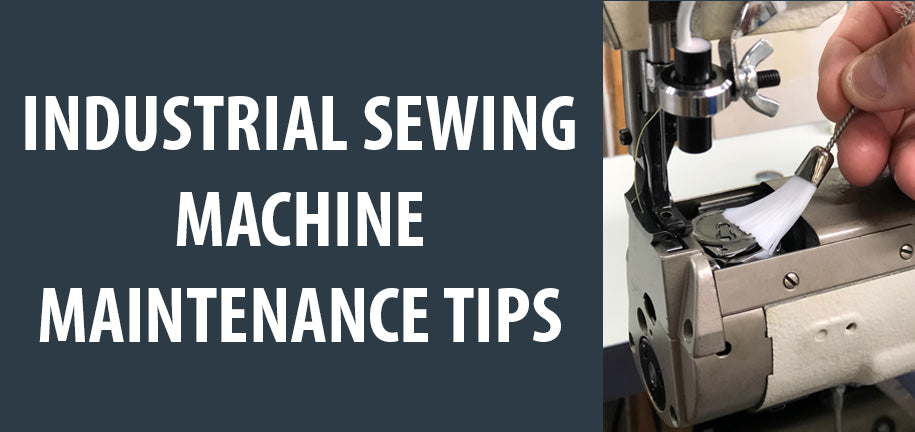Trusted since 1974.

Industrial Sewing Machine Maintenance Tips
When it comes to industrial sewing machines, regular maintenance is required to keep your machine in top shape and to avoid any machine down time. Sewing operators of any skill level can maintain their machine on their own to keep it running smoothly, make it last longer and ensure that all the internal components are functional and protected when you need your machine most.
1) OILING

An industrial sewing machine has many internal moving parts and gears that need to be oiled regularly. Failure to oil your machine will result in noisy operation, parts breakdown and can be a safety hazard to the operator.
You should oil your industrial sewing machine after every 7 to 8 hours of use.
Under regular use in a home or workshop setting, you should oil your machine after every 7 to 8 hours of use. This will ensure proper parts lubrication and will keep your machine running smoothly. Most industrial sewing machines are either manually oiled or feature an automatic oil lubrication system and should be oiled using clear sewing machine oil.
How To Oil Your Industrial Sewing Machine
Manually Oiled Machines
All manually oiled machines can be lubricated by dropping 1 or 2 drops of sewing machine oil into each oiling point, which are small holes all over the machine. Some of these holes may be marked by a red dot to highlight the oiling point.
You will also find oiling points around the bobbin/hook area which must be lubricated. Place 1 or 2 drops into each of these oiling points.
Any other oiling points on and around the machine should be lubricated. You can refer to your machine’s instruction manual or support materials/videos to see all of its oiling points.
Machines with Automatic Lubrication System

Machines with an automatic lubrication system have an oil reservoir that is located beneath the machine. The oil reservoir must be filled prior to using the machine and should always be filled to the appropriate level. Under regular use, you should replace the oil from the reservoir once a year.
There may also be additional manual oiling points on machines with an automatic lubrication system. Refer to your instruction manual for oiling instructions pertaining to your machine.
2) REPLACING YOUR NEEDLE

Replacing your needle is a simple and effective way to prevent sewing issues. Using a worn or bent needle can damage sewing machine components and be safety hazard to the operator.
You should replace your needle after every 7 to 8 hours of use.
Under regular use, you should replace your sewing machine needle after every 7 to 8 hours of use. Over time, needles become dull and can be slightly bent, which makes them more likely to break. Replacing your needle is the cheapest and most effective way to prevent costly issues to your machine such as damaging the hook, displacing the timing of the hook and needle bar or damaging the product being sewn.
How to Replace Your Needle
Safety Note – make sure to turn off and unplug the motor before making any repairs or adjustments to your machine.
To replace your needle, use a screwdriver to loosen the needle retaining screw. Remove the needle from the machine, then insert the new needle, making sure it is inserted all the way up to the top of the needle bar. For most machines, the needle must be inserted with the long groove facing to the left and the needle scarf facing to the right. While holding the needle in place, tighten the needle retaining screw. Always refer to your machine’s instruction manual and support materials to see the proper needle installation and to verify which needle system and sizes are compatible with your machine.
3) CLEANING

In addition to oiling and replacing the needle, regular cleaning is also required to keep your industrial sewing machine running smoothly.
You should clean your industrial sewing machine after every use.
Give the outside of your machine a wipe to remove any dust or lint buildup. Most importantly, clean the bobbin and hook area by opening the needle plate and using a lint brush or compressed air to remove any lint, dust or pieces of thread from this area. Also pay attention to the tension discs and thread guides around the machine and remove and thread or dust buildup that may have occurred over time.
Preventative maintenance on your industrial sewing machine will protect your investment and ensure that your machine will run smoothly for a long time.
If you have any questions or need advice about maintenance for your Techsew sewing machine, feel free to contact us at any time!
